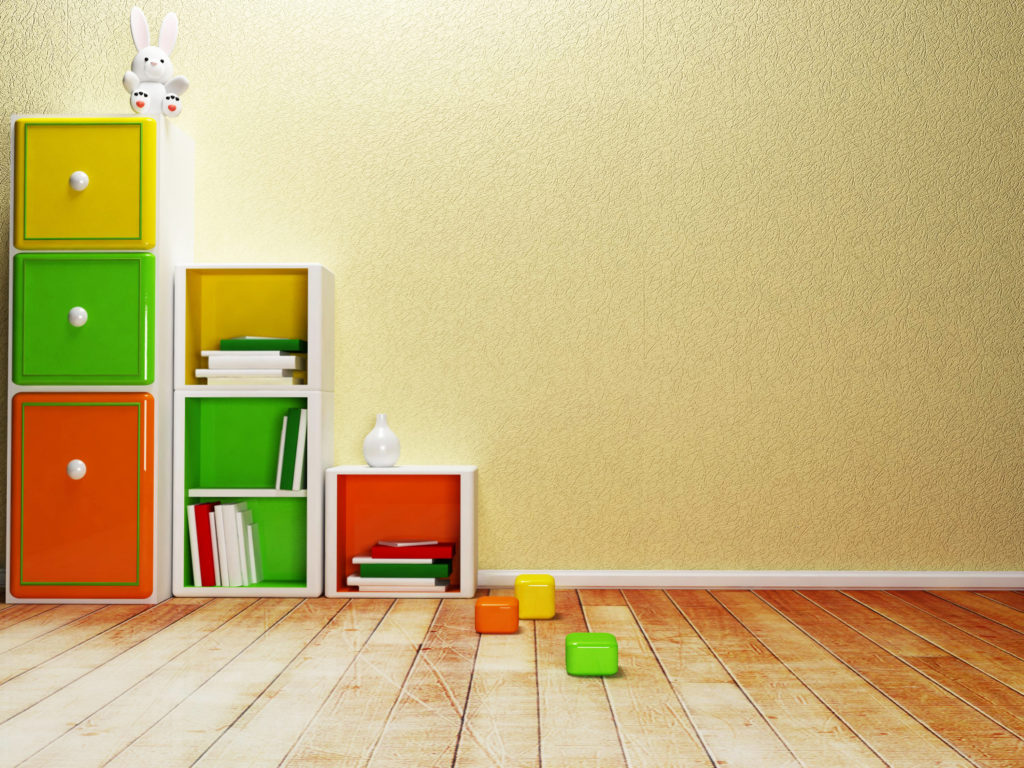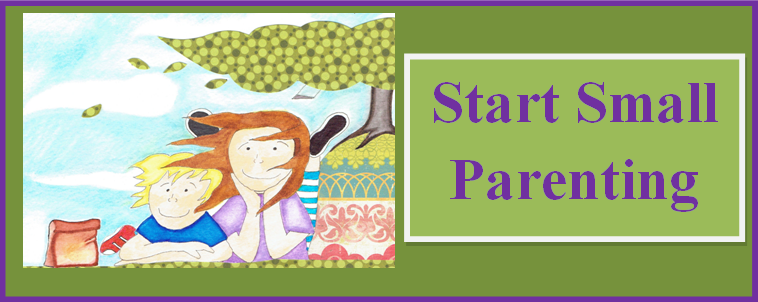
Embrace experience over things and “enough” rather than always more. – Dr. Kim John Payne
As we look for ways to calm our children, better understand them, and guide them through early childhood, a cluttered house and over-filled schedule can add to a sense of chaos for children. Their brains are growing rapidly and there is so much going on inside – it’s helpful if the outside presents a more peaceful landscape. They will be less argumentative. They will more easily be able to practice on-track behaviors and cooperation.
It’s been shown in studies that clutter negatively affects the brain. Physical clutter overloads your senses, makes you feel stressed, and impairs your ability to think creatively. A team of UCLA researchers from UCLA’s Center for on Everyday Lives of Families (CELF)., found that all of the mothers’ in a recent study had spikes in stress hormones during the time they spent dealing with their belongings.
Simplifying family life will help. One way is to look around and see where there is “too much” of something in your family – too much stuff, choices, information, activities, etc. Simplification makes more room for human interaction, creativity, relaxation, and growth.
“Many of today’s behavioral issues come from children having too much stuff and living a life that is too fast,” says Kim John Payne, author of Simplicity Parenting: Using the Extraordinary Power of Less to Raise Calmer, Happier and More Secure Kids.
Janice
Janice is a household engineer and professional blogger. She manages 5 other family members: husband who works full-time, three kids (ages 3, 5, and 8), and a dog. “That dog will destroy things if he doesn’t get daily walks and attention,” Janice told me. “Come to think of it, so will the other family members if they don’t get what they need.”
When Janice came to me, she kept a lot of balls in the air. House and life maintenance, transportation, behavior management, being a wife and partner, and blogging when she found a free moment. One very doting grandmother lived in town and she was a great babysitter. What wasn’t so great was that she bought the kids any and all catchy, blinking gadgets and adorable clothes – lots of them.
Janice desperately wanted to simplify. Her sense of calm was thrown off every day by too much of everything – too many activities, too much stuff, and too much attention-hopping. She wanted to re-connect her family with quality interactions but she wasn’t quite sure where to start.
First, I got her to look at what she wanted less of:
- Less Choice
- Less Stuff
Second, I asked her to articulate what she wanted more of:
- Family Time
- Quiet Time
- Structure and Repetition
Together, we decided to tackle four areas.
- Environment
- Life Rhythms
- Weekly Schedule
- Filtering
I also recommended that she read the above-mentioned book, “Simplicity Parenting,” by Kim John Payne. Much of what I was going to share with her came from personal experience, clients’ experience, and the wisdom in that book.
- Environment
I asked Janice to take photos of the children’s bedrooms and play areas. Each child had a bedroom with full book shelves, trunks of toys, and closets full of clothes. There was also a playroom with books and toys as well. Many toys had migrated to the living room, to an alcove off the kitchen, and to a den. In addition to the three bedroom photos, there were six other photos of household areas that had been taken over by children’s stuff.
The average American household has approximately 150 toys. Janice laughed. Because of the very generous grandmother, she guessed that was about right for each of her children.
For many people, it’s hard to focus or act calm if every space catches the eye with stuff. Since what seemed to fill most of the empty spaces were toys, we started there.
Toys
I asked Janice to halve the toys in the home. We discussed fixed vs. changeable toys. Fixed toys had a specific purpose, often singular. This included movie-themed items with pre-existing names and personalities or toys that beeped and lit up with buttons to make them work. Changeable toys had many uses depending on the child’s creativity. This included art supplies, building items, or objects found in nature. It would be ideal to have fewer fixed toys.
The items she was removing could be tossed, stored, or given to a charity, depending on their use and condition. In order to help her make simplified choices, I offered a list of what to keep:
- Dear night-time toys (like a special blanket or doll)
- Receptive toys: favorite dolls or stuffed animals
- Toys that involve building, digging, and construction
- Items found in nature such as pine cones, rocks, feathers
- Creative materials like paints, crayons, clay, or play dough
Clothing
Janice sorted clothes by season. She stored those not in use as those that were too large for the child and could be saved for later.
The suggested amount:
- 14 outfits for each child per season
- 7 pairs of undies, socks, etc.
- 3 pairs of shoes (sturdy play, dress-up, and sandals/boots depending on season)
- 3 jackets (light weight, heavy weight, raincoat)
Janice looked at the list and sighed. She told me she was looking forward to actually getting her kids’ drawers all the way shut.
Books
I recommended 10-15 books, within the child’s reach.* More books might be on the higher shelves of the bookshelf, but this is the number I recommended to have that each child could easily see. I suggested Janice change up some of them every week, substituting a few of the accessible titles for others from the upper shelves. I also recommended adding variety through library books. (In this family, each child already had their own library card, which was great!)
*Just a note here – Janice actually squeaked with anxiety when I said the number 10. She loves books, her mother was a librarian, and she feels the greatest gift she can give her children is the gift of reading. She told me ten definitely made her feel tight inside. We loosened the number to 15, with a goal to work toward 10 at a later time.
Food
Janice loves to cook and experiment with food. She feels that her kitchen is her sanctuary. In fact, when her kids help out in the kitchen, it gives her some anxiety. My request to have her make a set menu was met with resistance. I assured that within this plan there would be some room for her creativity, some room for kitchen-alone-time, and some chances to teach her children how to learn to be respectful and responsible in the kitchen.
I showed her a sample weekly repeatable dinner menu from a client with two kids named Alicia and Finn, aged 4 and 6:
- Barbecue Monday: Dad
- Tex Mex Tuesday: Finn (and Mom)
- Wacky Gut Wednesday: Mom
- Thursday Throwdown Pizza – Alicia (Dad)
- Fresh Friday Pasta – Finn and Alicia (Mom)
- Saturday Surprise: Mom
- Sunday Soup, Salad or Leftovers – Everyone
I pointed out some benefits for Janice. Two nights she could be creative and experiment with recipes (Wed and Sat). Two nights she wouldn’t cook (Mon and Thurs). Each child had a dinner (with a parent’s supervision) and would be learning to make a meal. And Sunday everyone could pitch in for an easy meal of leftovers or soup and salad.
With some meal theme tweaks, Janice was in.
Toddlers and Food
Even real littles can learn to help in the kitchen. Sure, it might get a little messy but the long-term benefits outweigh the relatively short-term hassles.
Toddlers are learning to be good eaters. It doesn’t come naturally for some. Consider this simple yet nutritional sample menu and how a toddler could be involved (substitute for any food sensitivities). The more involved a child is in preparation of their own meal, the more likely they are to eat it.
- Life Rhythms
If a child has difficulty with routines in the family, then putting a focus on your family’s rhythms will be helpful. Children have a limited knowledge of time or what is going to happen next. Defining and refining your family’s rhythms can also decrease anxiety in young children.
What informs the rhythms of your family? Look at repeatable events that happen every day, week, month, or year. How do you carry out repetitive activities and how do you celebrate special events? Inspired by Kim John Payne, here are some questions to consider:
When I get up I…
This is what we do on school day mornings…
Before we leave the house we…
When I get home from school (or music, or park, etc.), I…
When my Mom or Dad starts dinner, I…
Before bed, we like to…
The thing I love about Saturday mornings…
When one of us is sick, we always…
The special thing we do for someone’s birthday iss…
Post a Routine
Let’s say your child is having trouble getting around and out the door in the morning. Together, brainstorm a list of the tasks that need to take place. One family with twin 4-year-olds was having such difficulty keeping the kids focused on getting ready. They created this list:
- Sing a good morning song
- Stretch and smile
- Get dressed
- Eat breakfast / Carry off the dishes
- Go potty
- Wash hands / Brush teeth / Wash face
- Put on Shoes
- By the Door – Ready to Go
Young children respond well to visuals, sometimes better than words. This mother printed out drawings she found of these activities and pasted them to construction paper hearts. (You could draw these yourselves, print out pictures from the internet, or take photos of your child.) She strung those together in the main hallway where the kids could see them. As they went through the morning, the children could run to the hearts and check out what was next.
The mother gave little instruction. Her children knew how to do the activities; they just didn’t know the order. As you can imagine, this eliminated nagging. It also kept the children focused, diminished dawdling, and the kids found it fun! (See more on Routine Charts HERE.)
- Weekly Schedule
When is enough, enough? When does stimulation become overstimulation?
The answers are particular to every family and the makeup of the family members. It is a worthy conversation and important to take a closer look at the busyness of modern families.
Active and Calm
As part of your Detective Journal, note how much Active and Calm time takes place in each day. Active is either Structured or Unstructured events, usually outside the home but could also be people coming to visit. Structured activities have determined start points in which you need to be on time, like a music class. Unstructured activities are like play groups at the park, where the timing may be looser yet it’s still desirable if you confirm your attendance. By Calm I mean down-time with free play – where there is no prescribed activity, free choice is available, and Pressure Release Valves can be utilized.
Go through your Detective journal and put A (for Active) or C (for Calm) by different time periods.
How much Calm is needed to balance Active for you? For your child? For your family?
Take a sample week. Here’s a suggestion of how one father divides up the week with his 2 year old:
2 Days with one Structured Activity each day – Music, Library time, Open Gym, etc.
2 Days with one Unstructured Activity each day – Playgroup, Walk, Friends over
2 Calm Free Play days – stay mostly at home or outside in nature
1 ? – The father liked activities, the child really liked to be home. The father alternated between Active and Calm each week on this extra day.
Another mother works full time so her list looks different:
5 mornings – Active structure at day care
5 afternoons – Calm Free Play at Grandma’s house
1 weekend day – Unstructured Activity
1 weekend day – Calm Free Play mostly at home
While you are taking your child’s preferences into consideration, you have to think of your needs as well and try to find a balance between the two. This is also not to rule out spontaneity. That can certainly happen.
Having a big picture idea of Active and Calm can bring the whole family closer to balance.
- Filters
There has never been another generation with so much consuming “adult” activity taking place right in front of the children. Technology has allowed parents to bring work home which has certain advantages of the parent’s presence. One distinct disadvantage is that the children observe their parents with a lot of screen time.
With many gadgets used in the presence of children, there is the possibility to see news or adult shows while the child is awake. And there is the ever-present phone…
I have seen many small children in public pacified by their parent’s phone. Even if it’s not ON, the child has an early fascination with this object that the parents give a lot of attention. Once it gets turned on for them, it’s hard to look away from the bright images. The child then has many “wants” in relation to these devices. It goes from “I want to play with your phone,” to “I want my own gadget” and then the plea for an upgrade: “Everyone has the new ___(fill in the blank with any electronic gadget) and I want THAT.”
I suggest that you limit your screen time. When do you absolutely need to be on a device and when is it a habit? If it’s necessary, can more of that screen time be done while the child is away or sleeping? Is it possible for the parent who works at home to have a home office or separate space to work?
As the child grows, it is essential to place filters and limits on home computers when possible. Troubling violent and pornographic images are sometimes too easy to stumble upon and once seen, can’t be erased.
More Cooperation
When children are calm and centered, they are more apt to cooperate and more easily learn a new behavior.
Make a change. Then give yourself 2 weeks. Notice a difference?
Parent Points:1. Clutter is stressful and has negative effects on the brain. 2. Remove fixed toys when possible and replace with changeable toys. 3. Keep a pile of rotating books of about 10-15 within your child’s reach. 4. Post a routine chart. 5. Check your schedule for a balance of Active and Calm activities. 6. Keep as much of the adult’s world at bay until the child is older. |

